->2023 23 Oct.
Pendulum
I worked on a pendulum animation assignment. For the first version, I was told that it lacked dynamic ( So sad!! ). For the animation principle, we should add more exaggeration and dynamic motion to it. Therefore, I adjusted it for a better understanding of how pendulum animation works.
Look at real life as a reference for animation.
My planning:
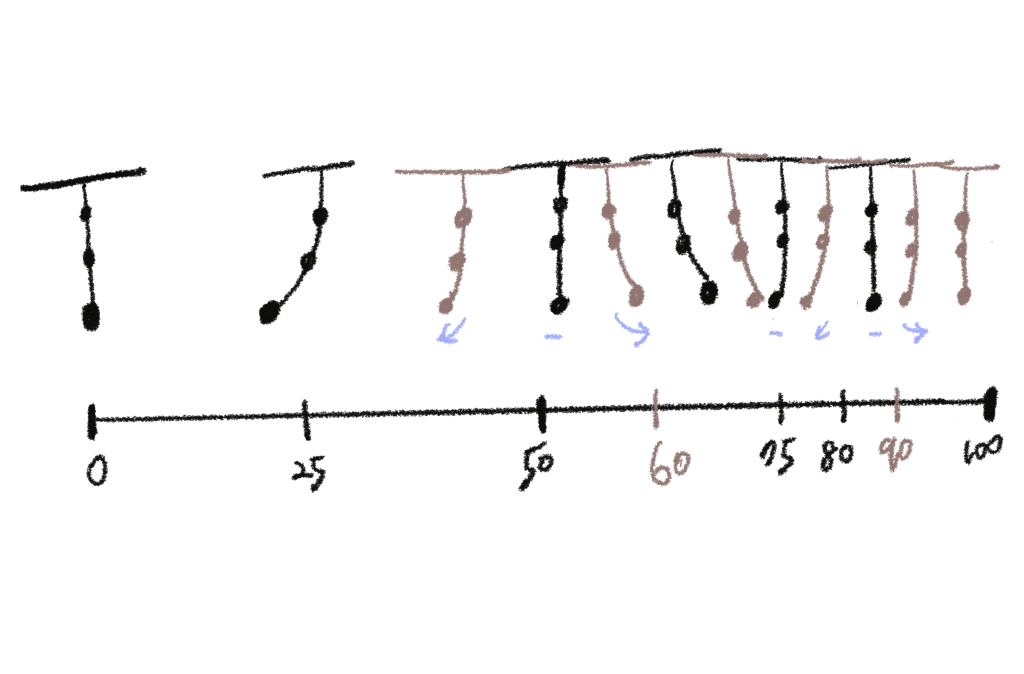
About Overlap term:
- Follow Through
- Successive Breaking of Joints
- Drag (wave principle)
ASK – 231-244 Overlapping sessions.

->2023 20 Oct
12 principles of animation
Today, we learned 12 principles of animation and the teacher just gave some examples as references.
I wrote the 12 principles of animation into this independent page for future easy review.

Everything is a Bouncing Ball. We know the bouncing ball exercise is a staple in nearly every animation curriculum for a good reason. It serves as the fundamental building block for mastering energy. When faced with the challenge of animating characters or creatures, it’s often helpful to step back and approach each component of a complex rig just as you would a bouncing ball.
Note from ASK- P231-244

Overlap term:
- Follow through: Follow through obeys the key concepts of successive breaking of joints, drag and lead, and follow. This type of overlapping action is generated by external forces like weight, wind, gravity, etc. ( hair, cloth, ears, tails )
- Successive Breaking of Joints: ( pendulum example ) -> flexibility and overlapping action. Not everything happens at the same time. The body parts are flexible and overlap one another. One section would lead as the subsequent sections would follow afterward slightly delayed. This would give the feeling of overlapping action.
- Drag (wave principle): Drag plays an essential part in how an object “overlaps.” The wave principle is essentially a series of arcs.

- Line of Action: an imaginary line that runs down the spine.

- A clear silhouette: outline of a shape
Start sketching! Observe people on the street and life drawing. In this way, we can build a library in our minds.
Other notes
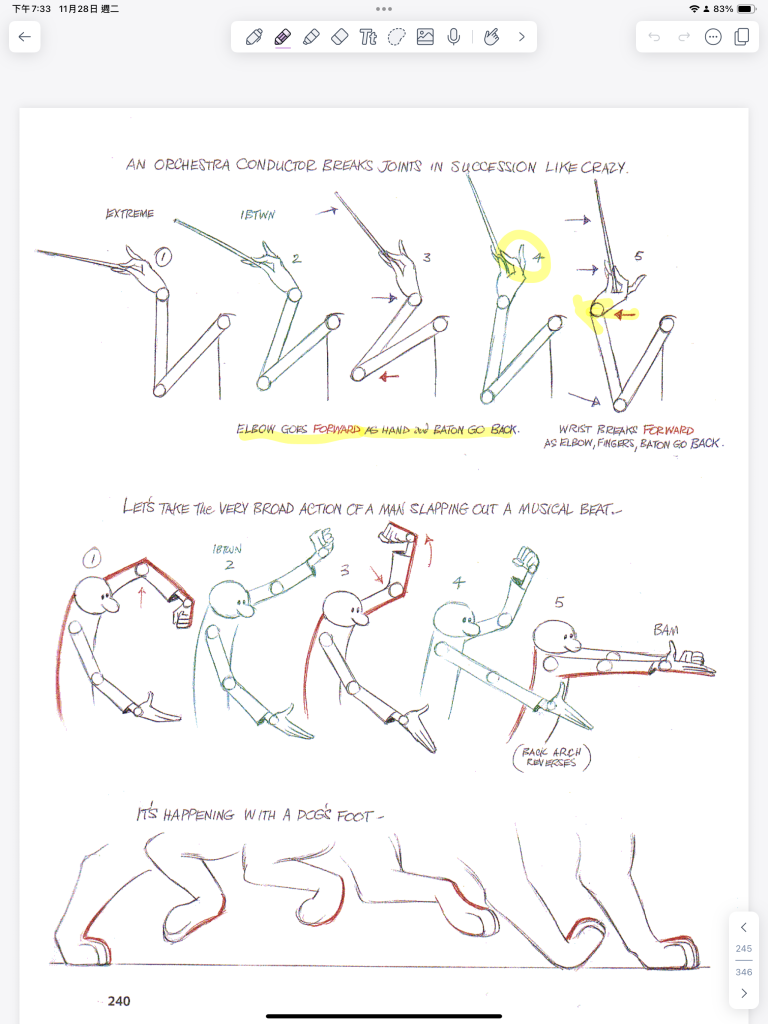
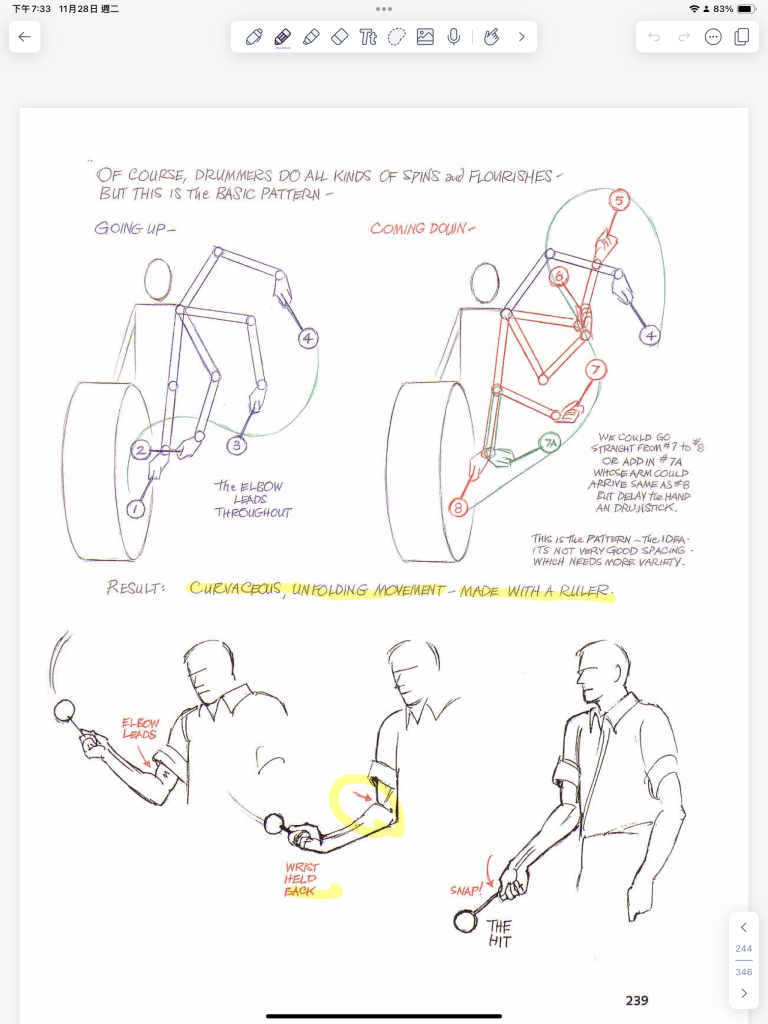
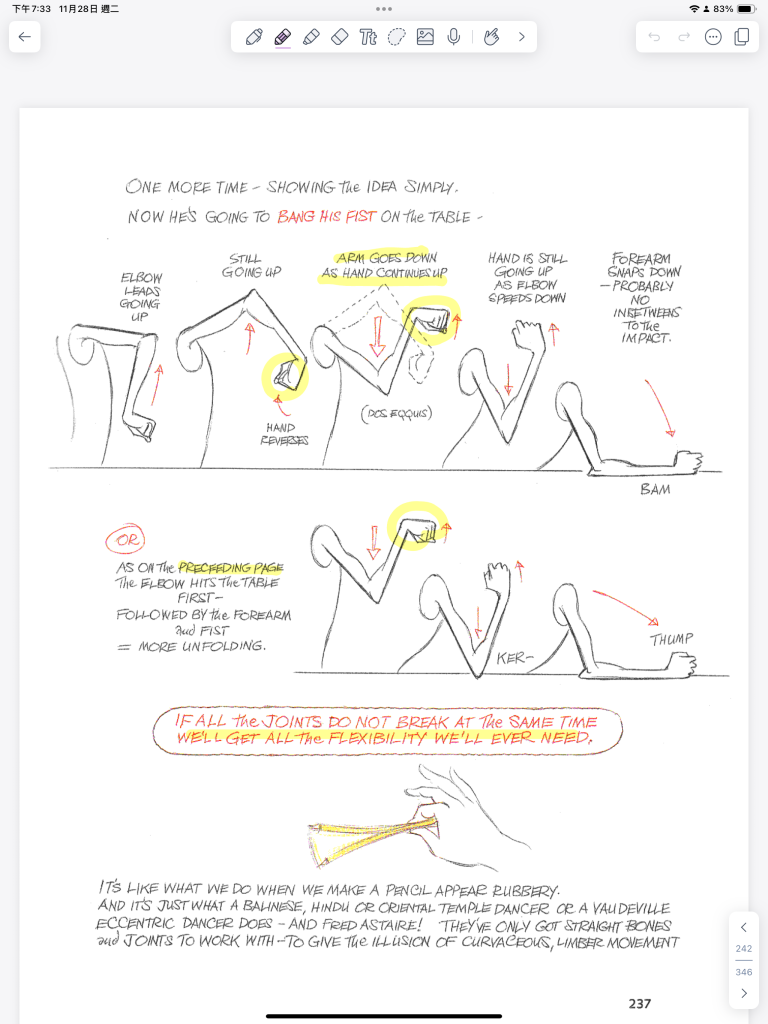
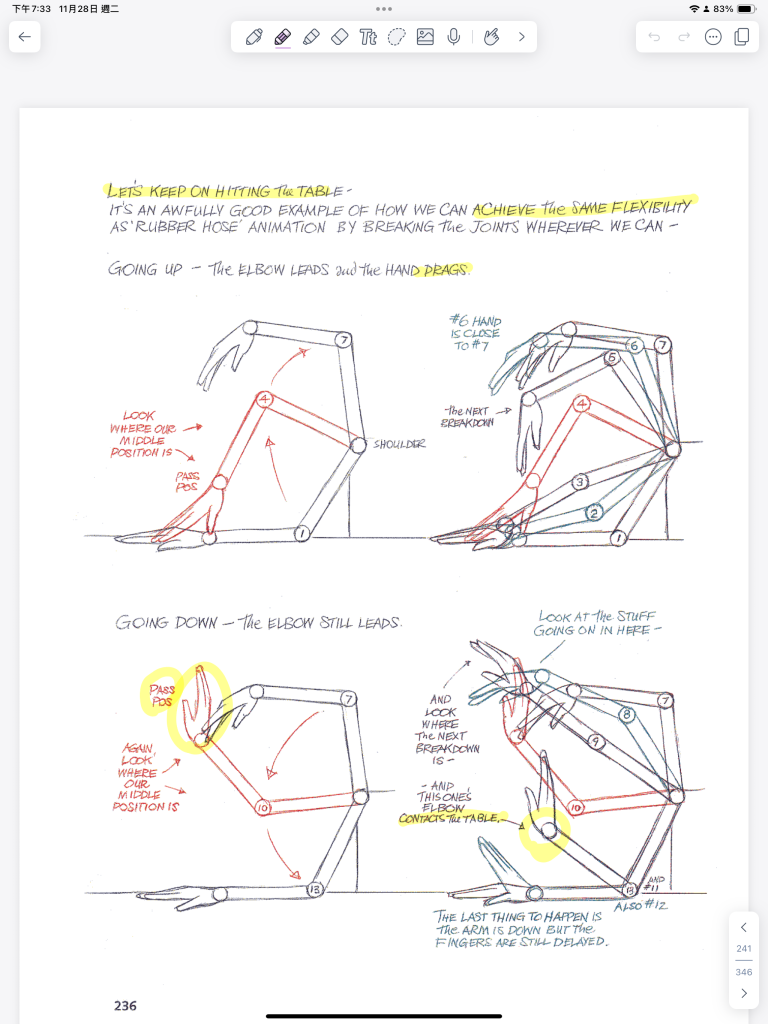

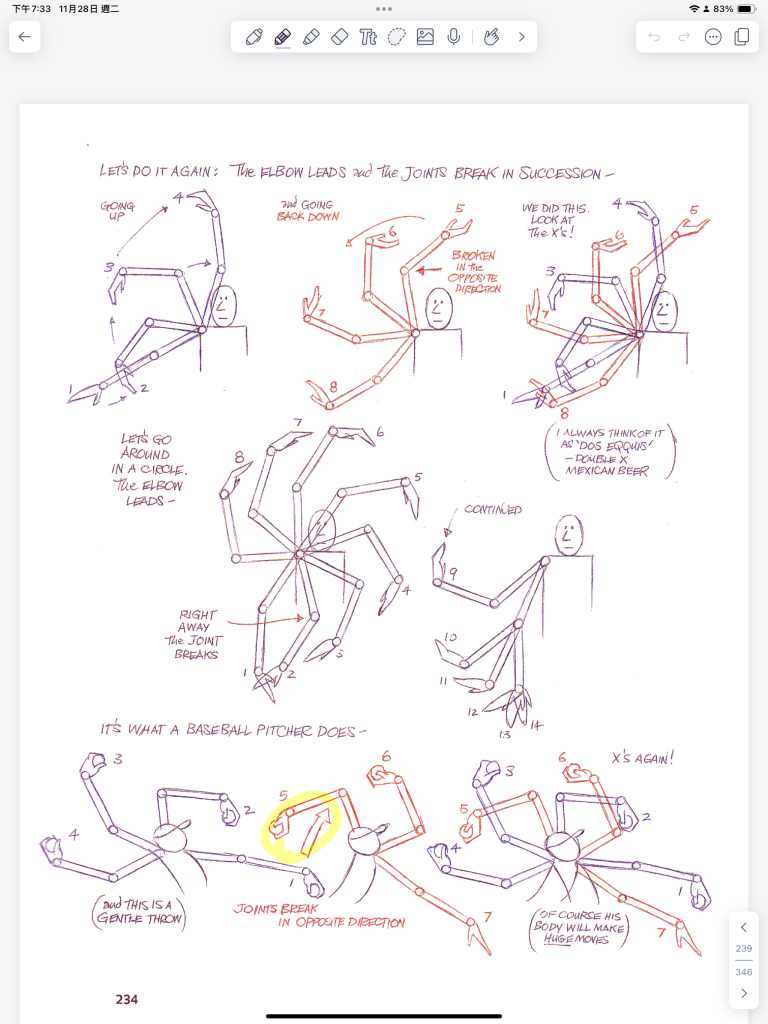
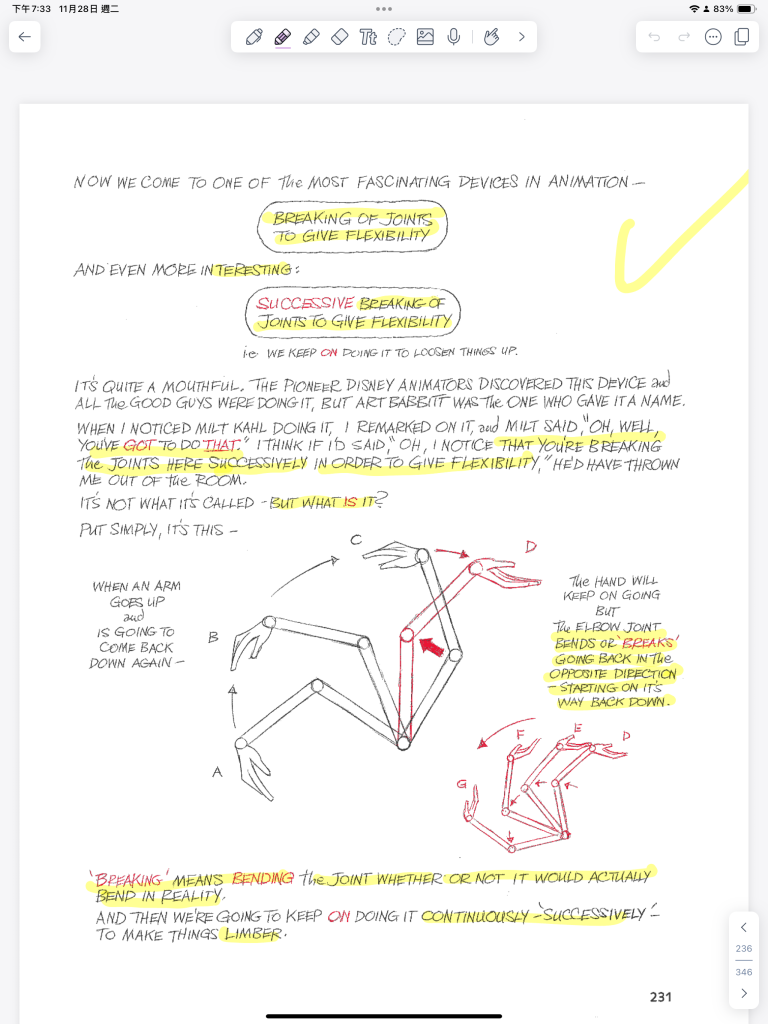
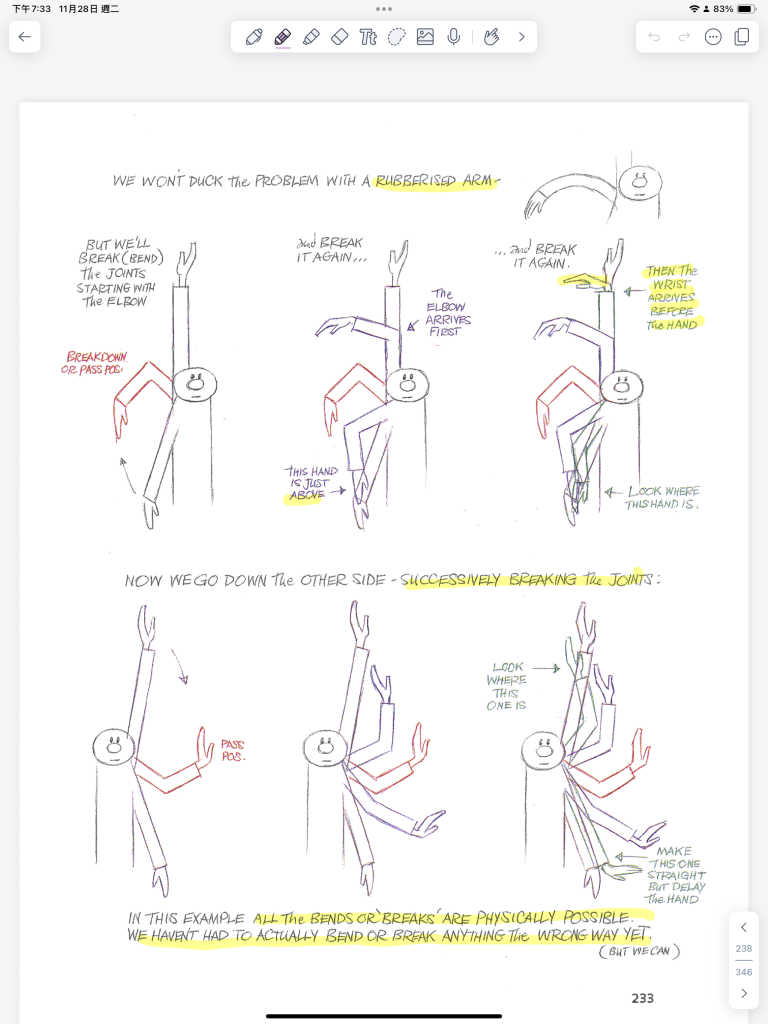

->2023 17 Oct
Bouncing Ball
I recorded the final process of my bouncing ball assignment.
Keynote: 1. Set keyframes step by step. 2. Adjust the monograph to add ease-in and ease-out speed 3. Squeeze the ball to make it more realistic
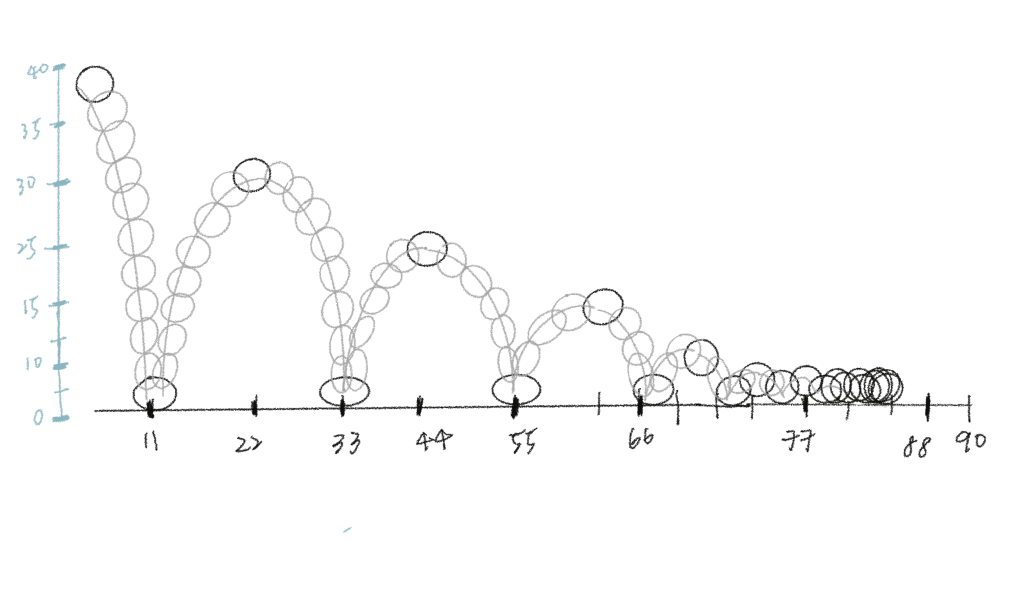

->2023 13 Oct
First lesson
In our first lesson, we learned the overall structure of the course. The teacher just understands everyone’s interest and encourages something. ( Finished Not Perfect ) It’s Art, not the tool. Don’t get too hung up on our tools. The art is what’s important.
The observation method helps us to animate smoothly. For example, we can record our real acting shots and pose-to-pose.
Animation survival kit is our bible!
Most of the animation is 60% planning and 40% actually doing the work!
We learned basic tools in Maya and made a bouncing ball which we can refer to the animation survival kit and 12 principles of animation.
Key points of using MAYA:
- Layering is important in the workflow: Keyframe of position > rotation > scale
- Graphic editor to adjust animation smoothly
- Remember to set 0 when the ball touches the floor
- About render: Playblast
- Bouncing Ball Rig Link
